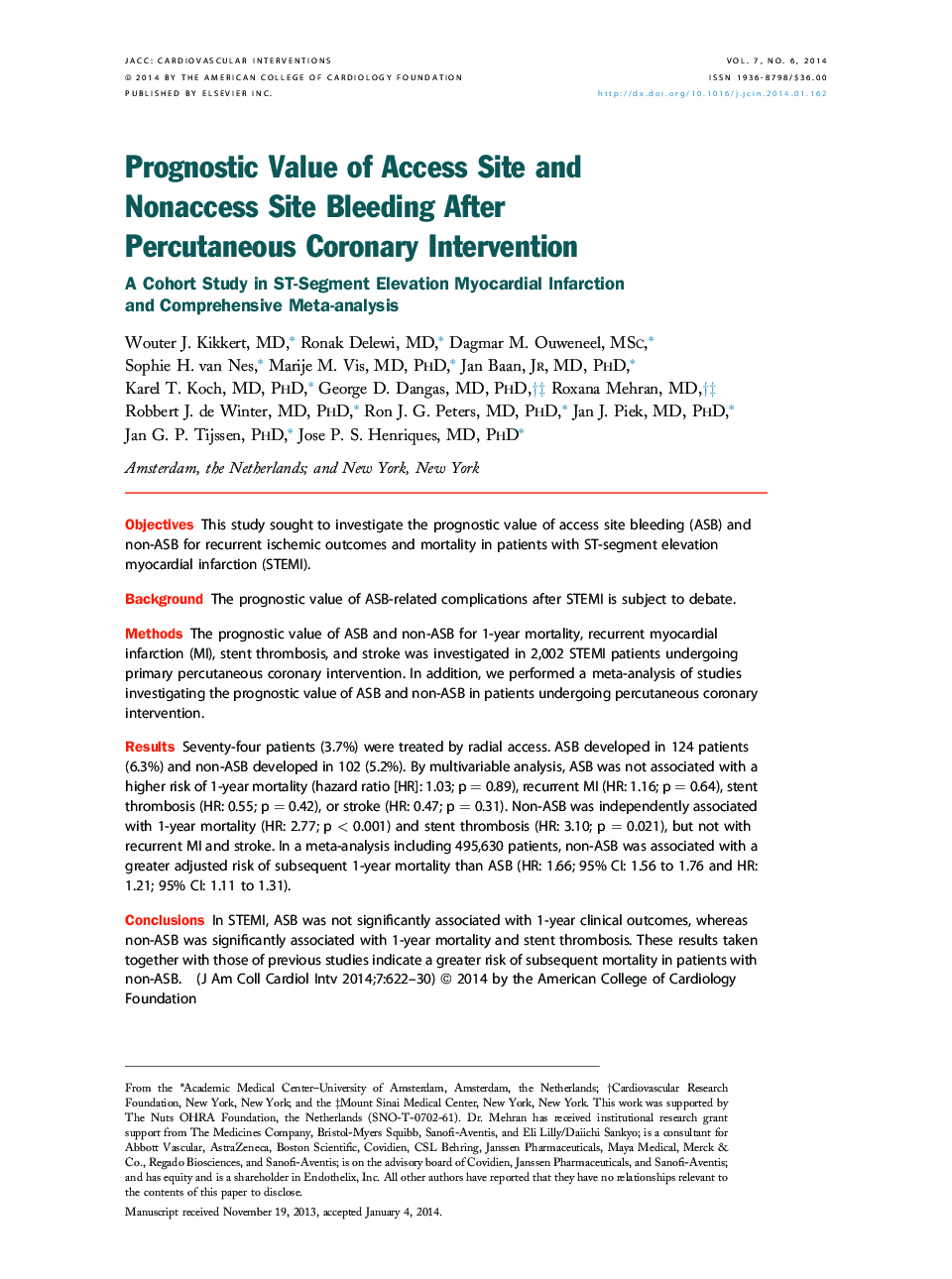| Article ID | Journal | Published Year | Pages | File Type |
|---|---|---|---|---|
| 2940185 | JACC: Cardiovascular Interventions | 2014 | 9 Pages |
ObjectivesThis study sought to investigate the prognostic value of access site bleeding (ASB) and non-ASB for recurrent ischemic outcomes and mortality in patients with ST-segment elevation myocardial infarction (STEMI).BackgroundThe prognostic value of ASB-related complications after STEMI is subject to debate.MethodsThe prognostic value of ASB and non-ASB for 1-year mortality, recurrent myocardial infarction (MI), stent thrombosis, and stroke was investigated in 2,002 STEMI patients undergoing primary percutaneous coronary intervention. In addition, we performed a meta-analysis of studies investigating the prognostic value of ASB and non-ASB in patients undergoing percutaneous coronary intervention.ResultsSeventy-four patients (3.7%) were treated by radial access. ASB developed in 124 patients (6.3%) and non-ASB developed in 102 (5.2%). By multivariable analysis, ASB was not associated with a higher risk of 1-year mortality (hazard ratio [HR]: 1.03; p = 0.89), recurrent MI (HR: 1.16; p = 0.64), stent thrombosis (HR: 0.55; p = 0.42), or stroke (HR: 0.47; p = 0.31). Non-ASB was independently associated with 1-year mortality (HR: 2.77; p < 0.001) and stent thrombosis (HR: 3.10; p = 0.021), but not with recurrent MI and stroke. In a meta-analysis including 495,630 patients, non-ASB was associated with a greater adjusted risk of subsequent 1-year mortality than ASB (HR: 1.66; 95% CI: 1.56 to 1.76 and HR: 1.21; 95% CI: 1.11 to 1.31).ConclusionsIn STEMI, ASB was not significantly associated with 1-year clinical outcomes, whereas non-ASB was significantly associated with 1-year mortality and stent thrombosis. These results taken together with those of previous studies indicate a greater risk of subsequent mortality in patients with non-ASB.
